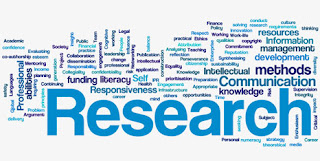Exploring the Possibilities of Writing Through Social Learning
The social climate in our country is the equivalent to a pot of stew that is on the verge of boiling over. I would go as far as to argue that the climate is more like a bomb waiting to explode. Students on any grade level of the academic spectrum are over exposed this environment. You can’t turn on the TV without hearing about the happenings of our newest President and the cast of characters starring in his presidency. This coupled with a country that has never been more racially divided in recent years. It is hard to be oblivious to the talks of terrorists, building walls, dropping bombs, women’s rights, public education and other hot button issues. So my question to this as an educator is how do we use this information or the world around us to teach? You can’t ignore it. Teachers can’t close off their classrooms from the world around them. We can thank the internet for that. So since we can’t shut it out, how do we bring it in?
Those probing questions led me to the selection of my two readings for this week. The first selection is the chapter 8 from The Activist Learner by Jeffory D. Wilhelm, Whitney Douglass, & Sara W. Fry. This reading really outlines and explains the meaning of terms like “service learning.” This is an idea that I was not formally introduced to until I got to college. I was in primary and secondary school during the late 80’s up until the late 90’s and this concept was never introduced to me as a student. Then when I went to college and started to study to become an educator the professors would mention it in passing but never in great detail. Partly because they knew change was on the horizon. Getting even a glimpse of the idea that this type of teaching and learning was possible piqued my interest and sparked my passion to be an educator.
The other article that were read is Chapter 13 from Writing For Change: Boosting Literacy and Learning Through Social Action by Jennie Flemming and Ian Boultan. In this they discuss how “Social Action is a community of development theory based on the simple premise that change is possible” (87). As an educator you have believe this if you’re going to impact change. This belief can be translated to curriculums that you can create to teach your students. I wonder about the logistical details of how these lessons can be tailored to K-5. Being this innovative can be a huge undertaking for a teacher. “...all people have the skills, experience and understanding that they can draw on to tackle the problems they face. Social Action workers understand that people are experts in their own lives, and we use this as a starting point…”(88). When the people are children how do we as educators give them the tools that empower them to take the reigns and follow their drive and passion.
I believe in this type of learning. I think that educators should look for every opportunity to put the learning in the hands of the students. They have more to say than we give them credit for. We are all living in this society together each bringing different experiences and perspectives. Educators need to step back from the notion that they are the end all be all experts of what they’re teaching. I believe that this thinking is what is keeping more people from embracing service learning and that is a shame.




Comments
Post a Comment